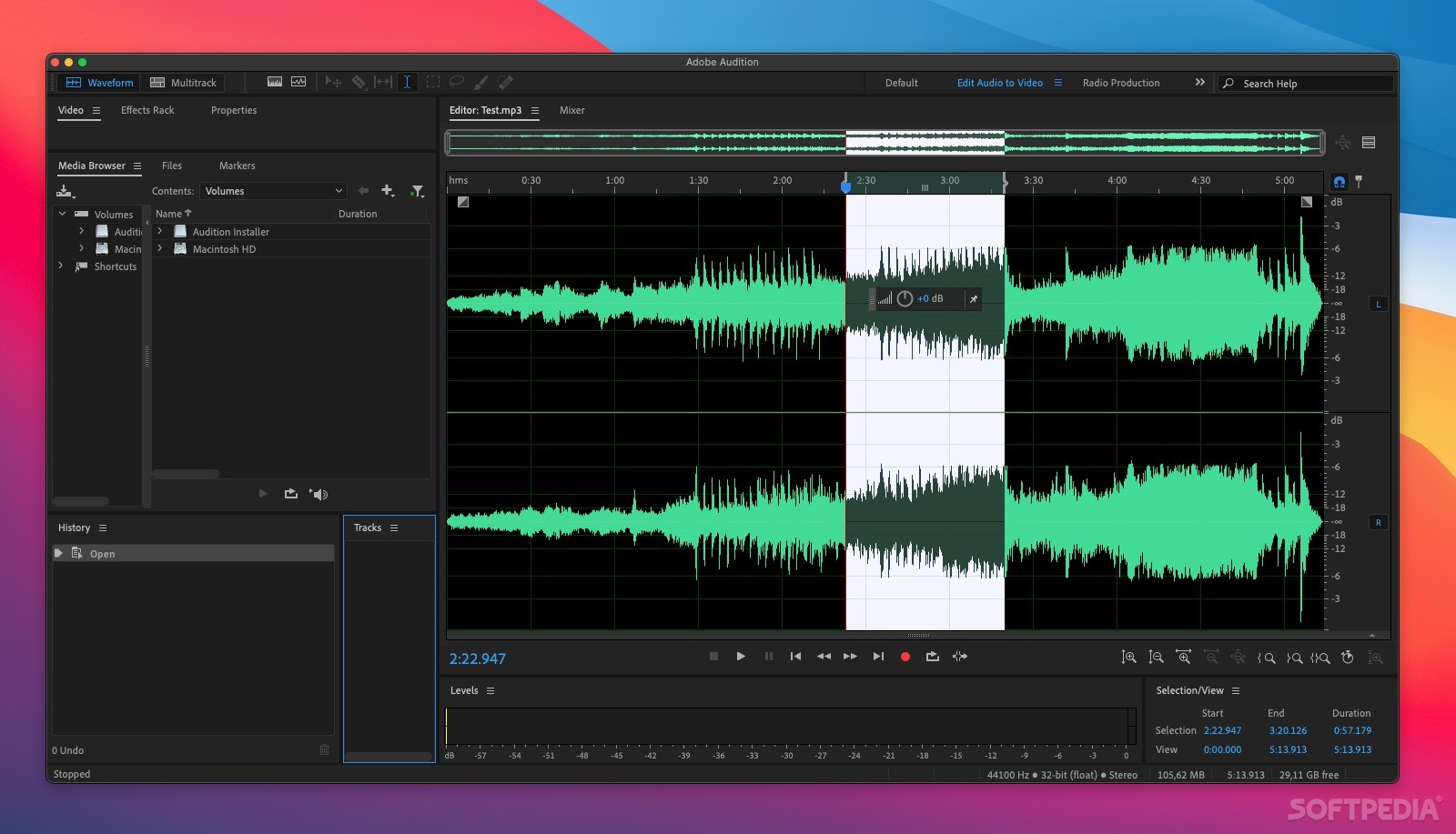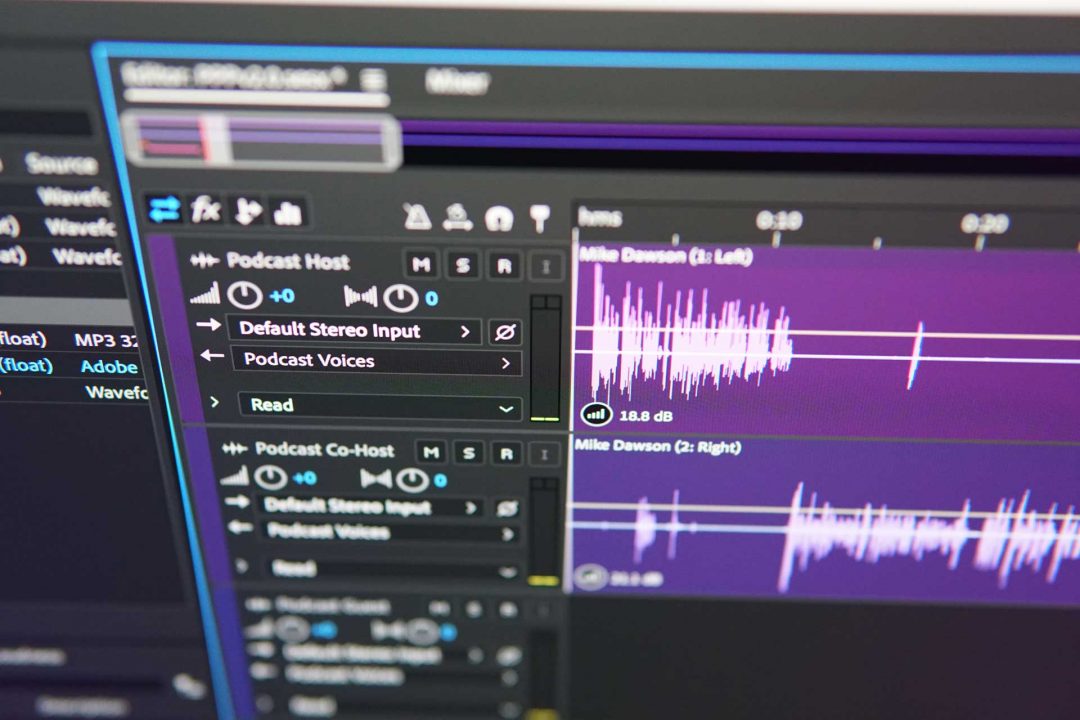

On small projects, say less than 10 tracks, you can apply the Limiter effect directly to the track. When measuring audio levels, always assume the meters are correct and your ears are wrong. It is not unusual for levels to exceed 0 dB during the mix as you are determining your levels, but excessive levels must be adjusted below 0 dB prior to final output. NOTE: The most important rule for audio is that your audio levels for the entire mix must not, ever, exceed 0 dB during mixdown, export, or when saving the file.
Adobe auditioneffects pro#
Many pro audio engineers prefer to work using average levels, which Audition can calculate, but not display.
Adobe auditioneffects full#
It displays audio levels using a measuring system called “dBFS” – or “decibels Full Scale.”īecause the system displays peaks, rather than average (or RMS) volume, I set my audio levels set using peak values. These filters are excellent for studio recordings with no noise, but not to be used for mixing location audio.Īudition, like Premiere Pro, Soundtrack Pro, and Final Cut Pro, measures audio using peak (or maximum) values. For this reason, I strongly recommend against using any presets to fix audio levels where the background sound is important to the mix. The problem is that these two filters are often part of the gain presets shipped with Audition. While these filters work, they totally destroy any background sound that’s contained in a clip recorded on location. In other words, the Limiter effect makes the overall volume of a clip louder while “guaranteeing” that the audio in that track won’t distort.īecause Audition has its roots in radio broadcast, several of its filters are designed to improve the levels of audio recorded in a studio. What the Hard Limiter effect does is amplify soft passages more than louder passages and guarantee that the loudest passages of a clip or track stay below the “limit” that you set in the effect.

( Read that article here.) A similar filter exists in Audition – called the Hard Limiter effect – that should absolutely be part of your regular audio toolkit. I first wrote about the Limiter filter when covering Soundtrack Pro. However, in almost all cases, audio effects are applied to the track. A typical use of a clip filter (which Audition calls “effects.”) might be to remove hum from one clip, without applying that effect to all the other clips in that track. ( Here’s a webinar that explains how these noise filters work.) However the reason we went on location in the first place was to record the sound of the environment along with our talent.Īudition allows audio filters to be applied either to the clip or the track. NOTE: Audition also provides filters that allow you to remove background noise. What we want to do is increase the softer passages while making sure the louder passages don’t distort. Also, it is either impossible or very difficult to respond to moment-by-moment changes in audio. However, in all of these examples, there is no guarantee that we won’t adjust the audio level too much and cause distortion.
Adobe auditioneffects how to#
So, this article shows how to use an effects filter in Adobe Audition CS6 to set levels dynamically.įor this tutorial, let us assume we have a variety of on-location recordings where we want to retain background and environmental sound. I have always loved working with audio, and this program has a lot of nice features that I appreciate a great deal. With the demise of Soundtrack Pro, I am very impressed with the new version of Adobe Audition CS6.

NOTE: I am always happy to learn from readers and correct my mistakes. Since things are a bit quiet at the moment, let’s boldly sally forth into a discussion of audio levels. In my experience, there are two statements known to cause riots: the first is categorically state what’s the best non-linear editor, and, second, is to discuss setting audio levels.


 0 kommentar(er)
0 kommentar(er)
